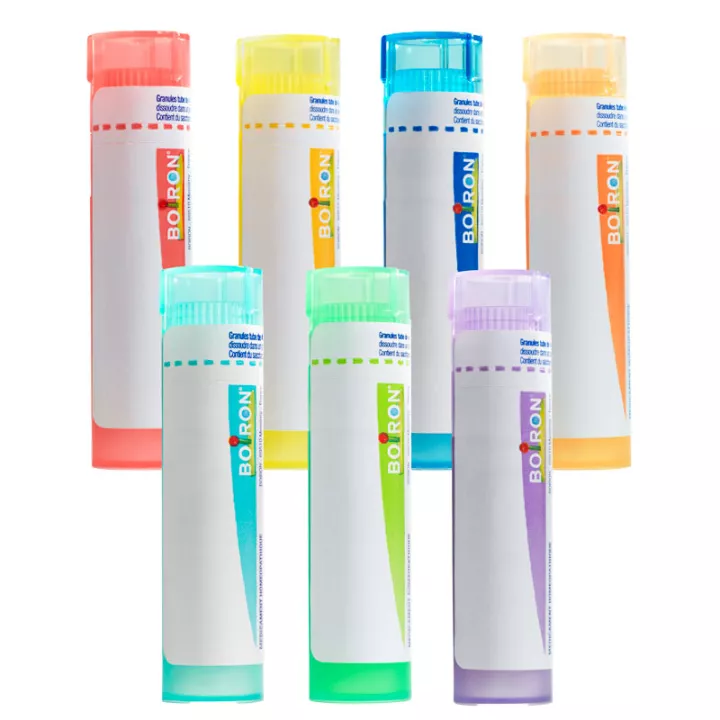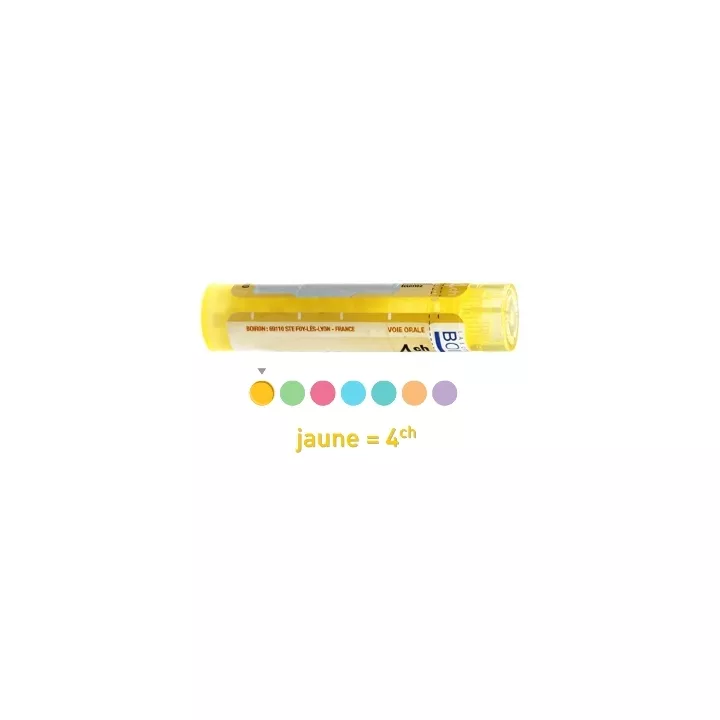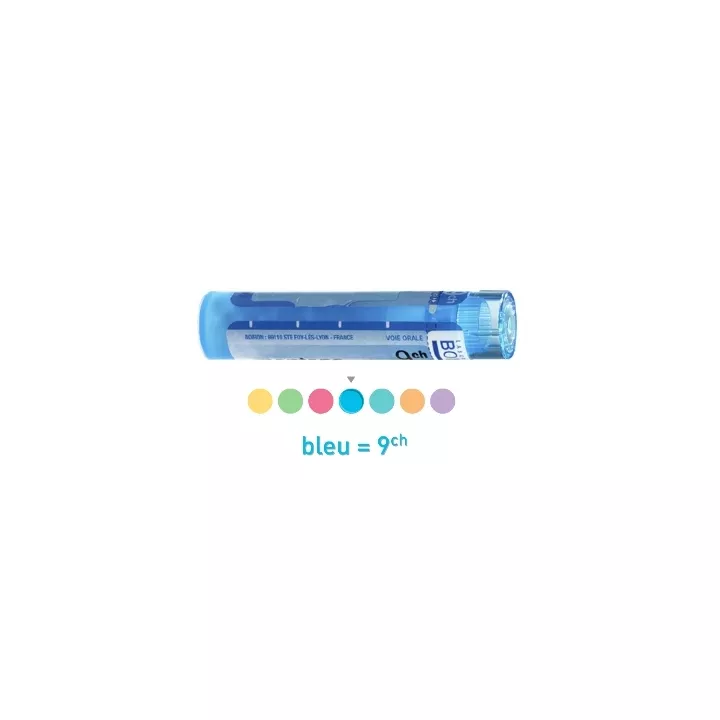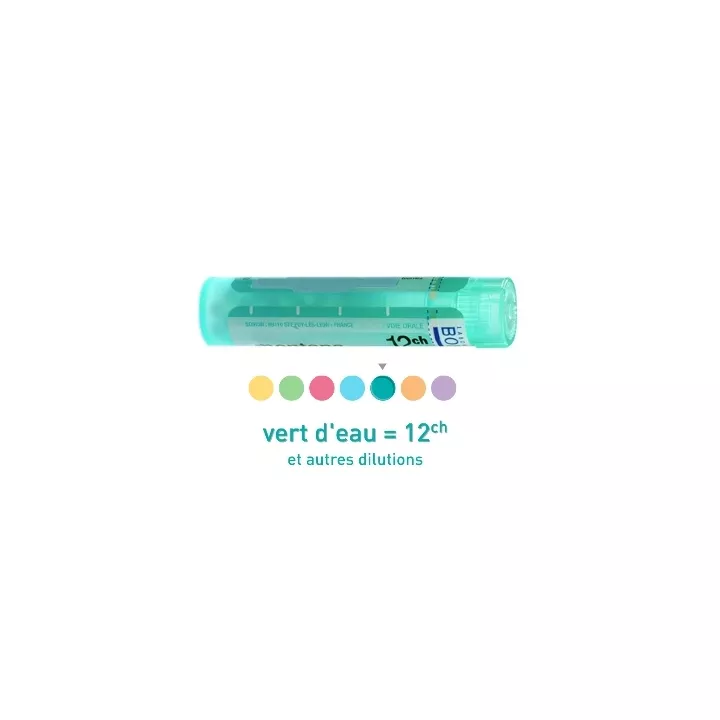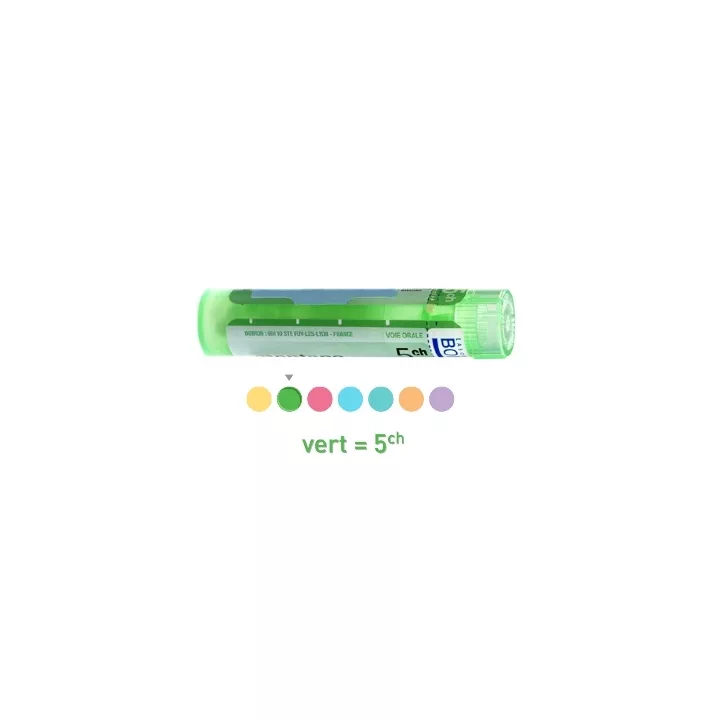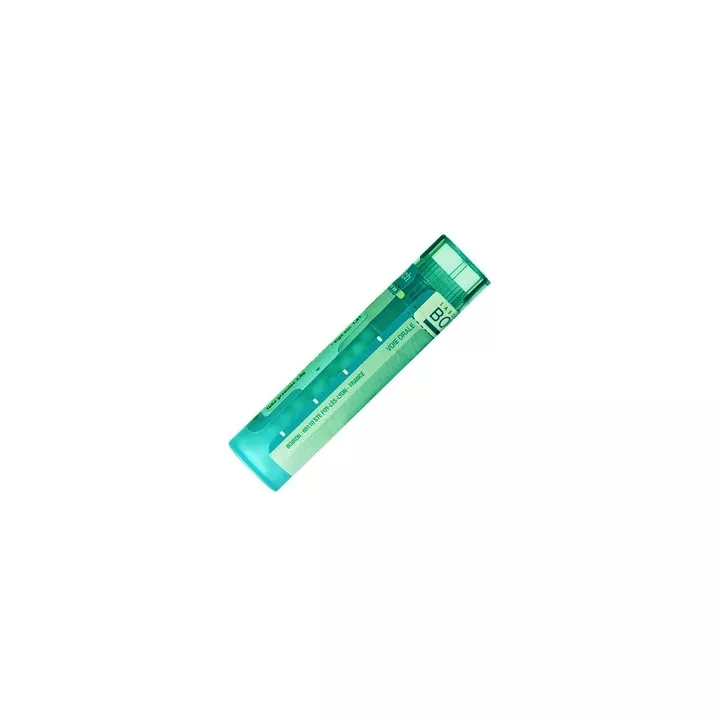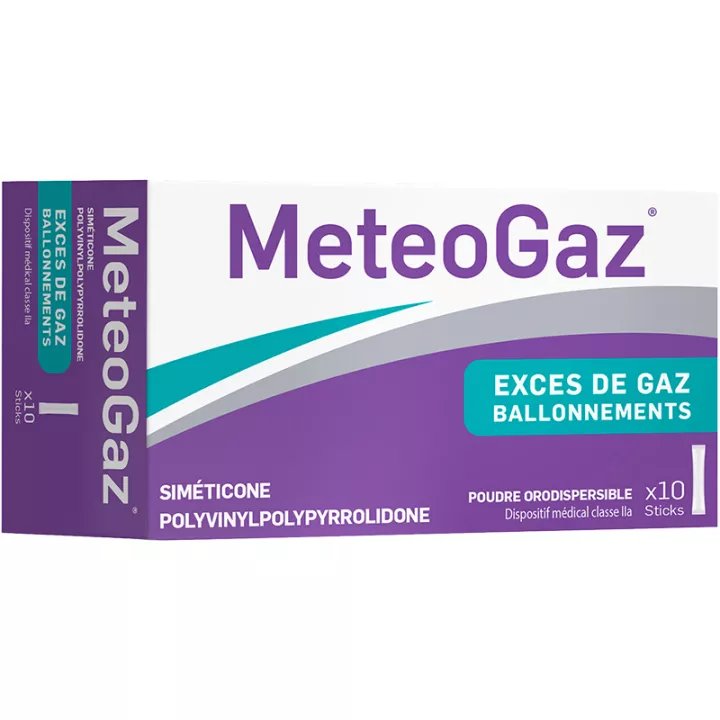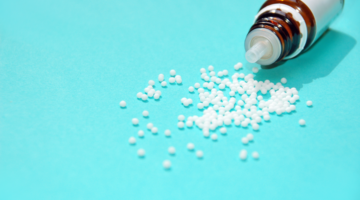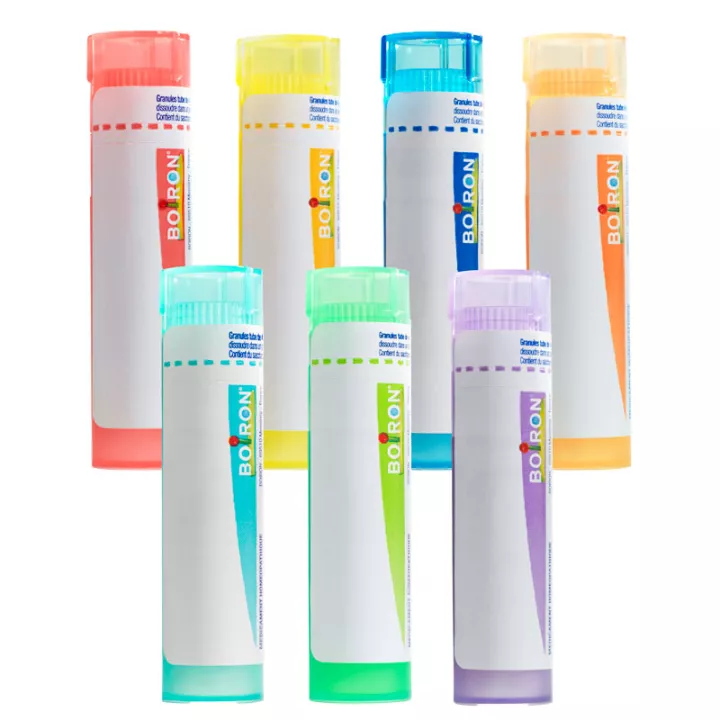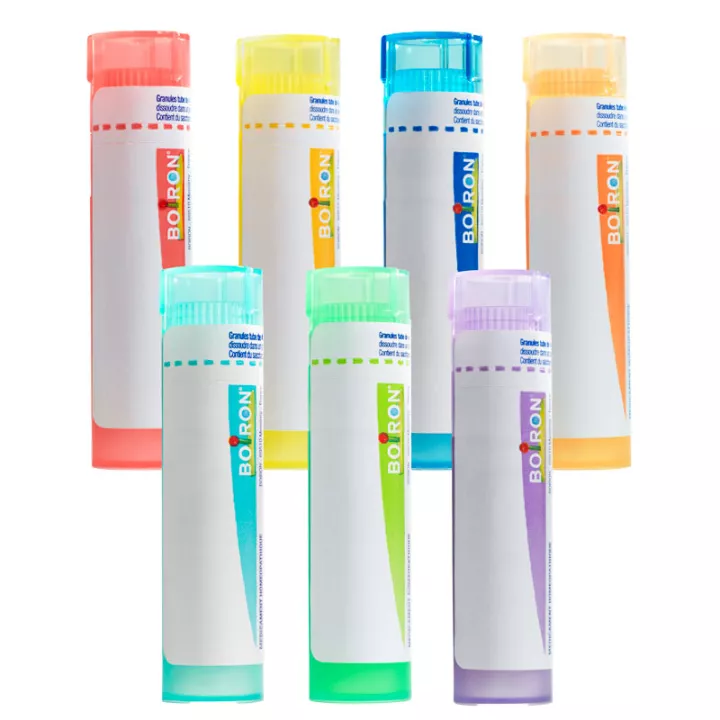Sepia officinalis 4CH, 5CH, 7CH, 9CH, 12CH, 15CH, 30CH Boiron homeopathic granules
Registered medicine: EH00952
Origin : Animal
The strain used to prepare Sepia officinalis is sepia, a blackish-colored liquid released by cuttlefish to defend themselves. This liquid contains large quantities of amino acids and trace elements. Sepia officinalis is indicated for gastrointestinal and urinary tractdisorders. But it is also suitable for treating gynaecological disorders, certain skin diseases and illnesses associated with nervous breakdowns. Dosage depends on the type of condition being treated. In some cases, other remedies such as Belladona, Natrum muriaticum, Amylium nitrosum and Borax can be combined with Sepia officinalis.
Sepia officinalis is a homeopathic treatment commonly used for women with a particular sensitive type. These women are generally thin, brown, with a dull complexion and brownish spots on their bodies. They tend to be sad, irritable, anxious and may show signs of depression. When they don't feel well, they tend to lose interest in those around them and seek solitude. To relieve the sensation of heaviness in the genital area, they often cross their legs when sitting.
Sepia officinalis: a versatile homeopathic remedy
Sepia officinalis is a homeopathic remedy that acts on most of the body's major functions, including the digestive system, liver, nervous system, mucous membranes, skin and psyche. It is therefore essential to quickly master the disorders associated with this remedy to get the most out of it.
Sepia officinalis is a homeopathic strain that acts on various bodily functions, including the nervous, digestive and venous systems. Thanks to its versatile action, this strain has many indications for treating a variety of disorders. In this article, we explore the most common indications for Sepia officinalis.
Digestive disorders
Sepia officinalis is often indicated for digestive disorders such as constipation, a feeling of tightness in the rectum, slow digestion, an empty stomach, nausea, bloating, acid eructation, poor appetite and bleeding hemorrhoids.
Gynecological disorders
This homeopathic strain is also used to treat a variety of gynaecological disorders, including frequent leucorrhoea, vaginal mycosis, irregular and scanty periods, "bearing-down" sensation, and painful intercourse.
Menopause and associated symptoms
Sepia officinalis is often recommended for menopausal women with liver, digestive and venous disorders, genital infections, leucorrhoea and hot flushes without redness.
Nausea during pregnancy
This homeopathic remedy is also indicated to relieve nausea in pregnant women, particularly those who tend to develop a pregnancy mask.
Migraines and urinary tract infections
Sepia officinalis can be used to treat migraines, especially those on the left side, as well as frequent urinary tract infections.
Asthma and chronic bronchitis
This homeopathic strain is also used as a background treatment for asthma and chronic bronchitis.
Skin disorders
Sepia officinalis is indicated for treating a variety of skin conditions, including eczema, mycosis, herpes, acne and psoriasis.
General fatigue and depressive episodes
This homeopathic strain can also be used to relieve general fatigue, hypotension and depressive episodes, including post-partum "baby-blues".
Conclusion: Sepia officinalis, a homeopathic remedy with multiple indications
Sepia officinalis is a versatile homeopathic remedy that can help relieve many disorders and improve quality of life. It is important to consult a healthcare professional to determine whether Sepia officinalis is the right treatment for your symptoms, and for advice on dosage and duration of treatment.
When should I use Boiron Sepia officinalis homeopathic granules?
The homeopathic doctor selects the appropriate dilution and dosage according to the patient's state of health and characteristic symptoms.
Recommended dosage of Sepia officinalis for gastrointestinal disorders
To soothe digestive disorders manifested by constipation, slow digestion, weak appetite, bloated stomach or nausea, take 5 granules of Sepia officinalis 5 CH morning and evening over a period of 60 days.
Sepia officinalis dosage for gynaecological and urinary disorders
- To remedy gynaecological problems, take 5 granules of Sepia officinalis 9CH, or 15CH or 30 CH, 1 to 2 times daily.
- For painful intercourse, take Sepia officinalis 15 or 30 CH: 2 to 4 doses per month.
How to take Sepia for hot flushes during menopause?
During the menopause, hot flushes are alleviated by taking 5 granules of Sepia officinalis 9CH, 15CH or 30 CH a day, or 1 homeopathic dose a week.
This strain is used as a background treatment and must be combined with other medications to treat specific symptoms.
- If hot flushes are accompanied by facial redness, Sepia officinalis should be combined with other remedies such as Belladona.
- On the other hand, if hot flushes are followed by a cold sensation in the back, Sepia officinalis is combined with Amylium nitrosum.
Recommended dosage of Sepia Officinalis for nausea in pregnant women
To relieve nausea during pregnancy, take 5 granules of Sepia officinalis 9 CH morning and evening for 3 months, particularly at the beginning of pregnancy.
Recommended dosage of Sepia officinalis in dermatology
To soothe skin disorders such as acne, mycosis or eczema, the recommended dosage is 5 granules of Sepia officinalis 15 CH daily for 3 months.
To treatherpes, a course of 5 granules of Sepia officinalis 15 CH is required, in combination with other homeopathic remedies such as Borax, Croton tiglium, Natrum muriaticum and Rhus toxicodendron.
Recommended dosage of Sepia officinalis for infections
Forfrequent urinary tract infections, use Sepia officinalis 30 CH: 1 dose per week for 3 months.
To treat asthma and bronchitis, take Sepia officinalis 15 CH: 1 dose per week for 3 months.
Recommended dosage for stress and overwork
Depression, general fatigue and related disorders such as low blood pressure and overwork can be relieved by placing 5 granules of Sepia officinalis 30 CH under the tongue every day for 3 months.
This advice section on medicines and health in no way replaces the diagnosis and advice of a doctor or pharmacist. The information provided is strictly indicative. Under no circumstances should this information be used for diagnostic purposes. We cannot be held responsible for any misinterpretation of its content, nor for the reader's state of health, whether prior to or subsequent to consulting these advice sheets.
Directions for use and instructions for Sepia Officinalis 4CH, 5CH, 7CH, 9CH, 12CH, 15CH, 30CH
Twist the tube to drop the desired number of granules into the cap, then place the granules under the tongue. Do not touch the homeopathic granules with your fingers. Use a mint-free toothpaste (such as Homéodent Boiron, which is compatible with homeopathic granules).
This homeopathic medicine is to be taken without meals, tobacco, coffee or mint. Granules and doses should be left to melt under the tongue.
Sepia Officinalis granules packaging and contents
Translucent granule tube (for visualizing remaining granules) Weight 4g. Approx. 80 granules.
Precautions for use
Warning
Contains sacchararose. Store Sepia officinalis 9CH homeopathic medicines away from light, heat and moisture.
Giving homeopathic granules to babies and children
Sepia officinalis 5 CH homeopathic granules are dissolved in 100ml of water. As the granules take a very long time to dissolve, you'll need to prepare your mixture in advance.
Homeopathy and pregnancy
Sepia officinalis 9CH homeopathic medicines have no chemical toxicity, no contraindications, no interaction with other medicines, and no adverse effects linked to the quantity of product ingested. Pregnant women can take Sepia officinalis without any known risk to themselves or their unborn child, but it is advisable to seek advice.
What to do if there is no improvement within 24 hours
Certain pathologies cannot be treated with homeopathy by simply self-medicating with Sepia officinalis. Your doctor will decide whether your condition can be treated with homeopathy alone, or whether your treatment needs to be supplemented with allopathic medicines.


